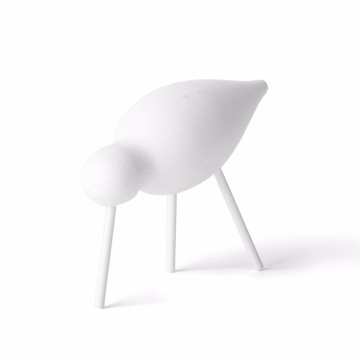Tasting Japan: A Ramen Lover’s Adventure
The History of Ramen in Japan
The story of ramen in Japan is both fascinating and complex, with roots tracing back to Chinese noodle dishes brought to the archipelago in the late 19th century. Initially called “shina soba,” which translates to “Chinese buckwheat noodles,” these early incarnations were introduced by Chinese immigrants and quickly adapted to local ingredients and tastes. The first ramen shops began to emerge in the early 1900s, predominantly in port cities like Yokohama, where cultural exchange flourished.
Ramen’s evolution was significantly influenced by Japan's historical events, particularly during the Meiji Restoration, which opened the country to foreign culinary practices. After World War II, ramen shops proliferated throughout Japan, serving as both a quick meal and a symbol of resilience in a time of reconstruction. The introduction of instant ramen in 1958 by Momofuku Ando marked a pivotal moment in ramen’s history, making the dish accessible not only within Japan but also globally, thus further cementing its status as a staple in Japanese cuisine.
As ramen gained popularity, regional variations began to emerge, with different locales showcasing unique ingredients and cooking methods. For instance, Sapporo ramen is known for its rich miso-based broth and the addition of corn, while Hakata ramen is renowned for its tonkotsu (pork bone) broth, characteristically served with thin, straight noodles. These variations reflect not only local tastes but also the availability of ingredients, illustrating how ramen has adapted to regional agricultural practices over time.
The globalization of cuisine has further influenced Japanese ramen culture, inviting international flavors and techniques while preserving the traditional aspects of this beloved dish. The rich history of ramen in Japan continues to evolve as chefs innovate and experiment, making it an ever-changing culinary adventure. Understanding this historical trajectory is crucial for appreciating the depth and diversity of ramen, which remains a beloved emblem of Japanese gastronomy.
Types of Ramen: A Culinary Journey
Ramen, a beloved dish originating from Japan, comes in various forms, each characterized by distinct flavors, ingredients, and preparation methods. Understanding these different types of ramen enhances the culinary journey and appreciation for this delicious meal.
One of the most popular types is Shoyu ramen, known for its savory soy sauce-based broth. This style often features a clear, brown soup that incorporates chicken or pork stock. Toppings typically include sliced green onions, bamboo shoots, and a boiled egg, which impart a harmonious balance of flavors. Shoyu ramen is commonly found in Tokyo, where its history is closely intertwined with the city's development.
Miso ramen, originating from Hokkaido, stands out with its rich, thick broth enriched with fermented soybean paste. This type of ramen is particularly popular during the colder months, as its flavorful and hearty nature provides warmth. Often accompanied by corn, butter, and vegetables, miso ramen varies in its richness depending on the recipe, making it a versatile option for ramen enthusiasts.
Another type is Shio ramen, which features a salt-based broth, offering a lighter alternative to its soy sauce and miso counterparts. The flavor is subtle, allowing the ingredients, such as seafood and vegetables, to shine through. This style is predominantly found in the Kyushu region and is celebrated for its refreshing taste.
Lastly, Tonkotsu ramen, characterized by its creamy, opaque broth made from simmered pork bones, has gained international fame. The rich taste and velvety texture make it a favorite among many. Originating from Fukuoka, this style often includes toppings like chashu (braised pork belly), green onions, and kikurage mushrooms.
Alongside these main types, unique regional variations showcase Japan's culinary creativity in ramen preparation, such as the distinct flavors of Kumamoto, which incorporates garlic oil, or the spicy ramen from other regions. Each bowl offers a glimpse into Japan's diverse culinary landscape, making the tasting of ramen a truly enriching experience.
Ramen Etiquette: How to Enjoy Your Bowl Like a Local
Experiencing ramen in Japan is not just about the taste; it is also about the cultural norms and etiquette that accompany this beloved dish. When visiting a ramen shop, the first step is to navigate the ordering process, which can vary significantly based on the establishment. Many ramen shops employ ticket machines where customers select their meals and pay upfront, ensuring a smooth and efficient ordering system. Familiarize yourself with the options available—broth types, noodle firmness, and toppings—to make an informed choice.
Once seated, rest assured that you are about to embark on a culinary adventure. A key component of the ramen culinary experience lies in the art of slurping. In Japan, slurping noodles is not only accepted but encouraged, as it enhances the flavors and demonstrates your enjoyment of the meal. The sound produced while slurping signifies appreciation for the chef’s preparation and the quality of the ingredients, creating an atmosphere of mutual respect between diners and ramen makers.
To amplify your tasting culinary experience, it is important to be mindful of the various components within your bowl. Take the time to appreciate the balance of flavors and textures—from the rich broth to the springy noodles and the assorted toppings. Additionally, consider savoring each ingredient individually before mixing them together, as this allows for a deeper appreciation of the culinary skills involved in creating your ramen.
Lastly, ramen dining often takes on a communal aspect, where patrons may share their experiences or even comment on their dishes with those seated nearby. This fosters a social environment, celebrating not just food but also connections formed over a shared love of ramen. Embracing these etiquette norms ensures that you experience ramen not just as a dish but as an integral part of Japanese culture.
Top Ramen Spots to Visit: A Foodie’s Guide
Exploring the rich culinary landscape of Japan, ramen stands out as a beloved dish, representing diverse flavors and preparation styles throughout the country. Here, we present a curated list of exceptional ramen shops that are essential stops for any ramen enthusiast.
First on the list is Ichiran Ramen in Fukuoka. Renowned for its tonkotsu broth, this establishment allows patrons to enjoy their meal in private booths, enhancing the focus on the delicious flavors. Ichiran’s signature dish is the original tonkotsu ramen, featuring noodles cooked to the perfect firmness, accompanied by their distinctive red sauce for added spice. Locals rave about the ability to customize their ramen, making each visit a unique experience.
In Tokyo, the iconic Tsuta Ramen deserves a mention. As the first ramen shop to receive a Michelin star, Tsuta is celebrated for its shoyu ramen, crafted using a soy sauce made from a blend of three different types of soybeans. The atmosphere melds modern design with traditional Japanese aesthetics, making it a pleasing backdrop for a meal. Diners often speak highly of the delicate flavors and the chef’s commitment to quality. However, bear in mind that reservations are recommended due to its popularity.
For those venturing to Sapporo, Ramen Santoka is a hidden gem known for its rich miso ramen. The blend of miso and smoky pork creates a hearty broth that warms the soul, especially during the chilly winters. The cozy ambiance complements the delicious dishes, making it a perfect spot for relaxation after a day of exploring. Enthusiasts frequently share their experiences, expressing delight at the smooth texture of the noodles paired with fresh toppings that elevate the dish.
These highlighted ramen spots reflect the diversity and dedication found in Japan's ramen culture. As you plan your foodie adventure, be sure to check the local specialties and directories to uncover even more hidden gems that fit your palate.




